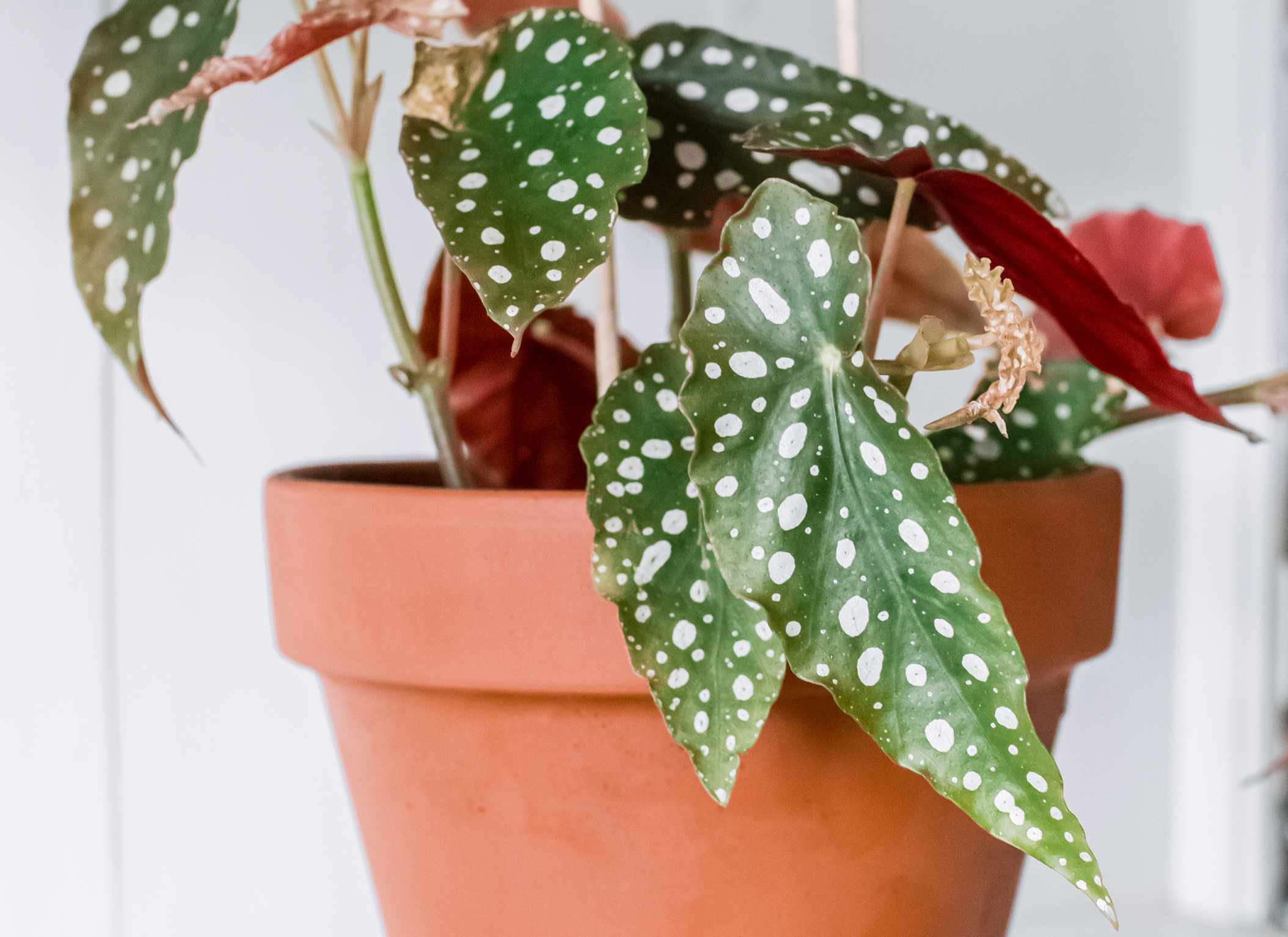Would you like some pretty leaves to put on your windowsills? Begonia maculata, which is also called the polka dot Begonia or the spotted Begonia, has become a huge hit in the world of houseplants over the past few years. Not surprising with those elegant, dotted leaves!.
Read on to learn how to take care of Begonia maculata, how to make more of them, about the different types of cultivars you can find, and more.
Please note that if you buy something after reading this article or clicking on one of my links, I may get paid a small fee.
Begonia maculata grows naturally in Southeastern Brazil, just like many of the plants we like to keep in our homes, like Ctenanthe, Maranta, and Calathea makoyana. It has also been brought into a few other Central and South American countries. You can find it as far north as Mexico and as far south as Argentina.
In its natural habitat, this species grows in rainforests. Its natural growth zone in Brazil is called the Atlantic rainforest, and it has higher elevations, stable temperatures, and a wet climate.
Did you know? Begonia maculata, like other Begonias, is traditionally used as a medicinal plant. In Chinese medicine, it’s described to be a diuretic and detoxifying agent.
Begonia maculata is a cane Begonia. This is a subgroup within the genus known for its semi-shrubby growth pattern and cane-like stems. Cane Begonias have joints on their stems that resemble bamboo, and flowers bloom from these joints. Their elongated leaves are sometimes referred to as “angel wings. ” (You’ll sometimes see the plant labeled as an angelwing Begonia. ) In the wild form, these leaves are solid green or feature some light spotting.
The plant we call the polka dot Begonia, which is actually a cultivar called Begonia maculata ‘Wightii, was grown in a special way. The name comes from the much bigger dots on its dark green leaves. This is a really beautiful and dramatic plant. The dots shine silvery in the sun, and the backs of the leaves are light to deep red.
You wouldn’t grow this type of Begonia just for its flowers, but if you take good care of it, it does have pretty little blooms. The flowers form in clusters and are white to pink, with bright yellow stamens.
Begonia maculata looks pretty nice in its wild form, but nurseries have been able to make a lot of different cultivars by carefully selecting which plants to grow. The most well-known is Begonia maculata ‘Wightii,’ also called the polka dot Begonia. The species became very popular as a houseplant because of this variety, but it’s not the only one.
The backs of a “Wightii” plant’s leaves are dark red (though they can get lighter if the lighting isn’t good), and the leaves’ edges are never touched by dots that are all the same size. Its flowers are white.
Besides these “pure” maculatas, there are also some hybrids that you can find, but I’ve never seen one in person. Figuring out which cultivar or hybrid Begonia you’re dealing with is pretty hard with Begonias in general, and Begonia maculata is no different.
It’s important to remember that none of the above varieties are as common as the ‘Wightii’ cultivar, and most people won’t bother looking for them because they’re not that different. If you want to grow one of these, you’ll probably need to buy cuttings from people who like houseplants.
Did you know? You’ll also see plants referred to as Begonia maculata ‘Tamaya’. The “Tamaya” part doesn’t name a cultivar; it names the way the plant is grown! Most cane or angelwing Begonias can be grown in “Tamaya” form, which makes the plant look like a small tree.
The angel wing polka dot begonia, also known by its botanical name Begonia maculata, is an eye-catching houseplant beloved for its ornate foliage Its olive green leaves are decorated with mesmerizing white polka dots on the upper surface and a deep purple underside. When cared for properly, this begonia rewards its owner with cascades of charming flowers as well.
In this comprehensive guide, we will cover everything you need to know about growing and caring for the angel wing polka dot begonia, from ideal conditions to troubleshooting problems. Follow these tips and this show-stopping plant is sure to thrive.
Angel Wing Polka Dot Begonia Characteristics
The angel wing polka dot begonia boasts some unique characteristics that make it stand out
-
Leaves are olive green and angel wing shaped, with prominent white polka dots.
-
Undersides of leaves are a deep reddish-purple color.
-
Stems are upright and bamboo-like, with segments like cane begonias.
-
During spring and summer, produces clusters of small white or pale pink flowers.
-
Can grow up to 3 feet tall, but typically reaches 1-2 feet as a houseplant.
-
Originally discovered in the 1980s in the Atlantic Forest of Brazil.
-
Considered an “angel wing” cane begonia thanks to the wing-like shape of its leaves.
Ideal Growing Conditions
While polka dot begonias aren’t too fussy, providing optimal care will keep your plant healthy and looking its best. Here are its key needs:
Light
-
Thrives in bright, indirect sunlight or filtered light.
-
Can tolerate some direct morning sun, but avoid hot afternoon sun.
-
Low light will cause leggy, sparse growth.
Water
-
Soil should be kept evenly moist, never fully drying out.
-
Water when the top inch of soil becomes dry.
-
Allow excess water to drain fully after watering.
-
Drought stress causes wilting and leaf drop.
Temperature
-
Prefers temperatures between 65-75°F during the day.
-
Can tolerate a range of 50-80°F.
-
Avoid extreme cold or hot spots.
Humidity
-
Enjoys average room humidity between 40-60%.
-
Higher humidity encourages larger leaves.
-
Use a pebble tray or humidifier to boost moisture if needed.
Planting Angel Wing Polka Dot Begonias
Use a well-draining, nutrient-rich potting mix when planting container begonias. Aim for a soil pH between 6.5-7.0. After settling your begonia into its pot, water thoroughly until it drains from the bottom.
Place in its preferred bright, indirect light location. As a new planting, allow the soil to dry slightly between waterings until begonia is established. Then maintain even moisture.
Ongoing Care and Maintenance
With routine care, angel wing polka dot begonias will grow vigorously and produce an abundance of dainty blooms. Follow these care tips:
-
Water whenever the top inch of soil becomes dry. Avoid underwatering or overwatering.
-
Fertilize every 2-4 weeks during spring and summer with balanced liquid fertilizer.
-
Prune off spent flowers and excessive, leggy growth to encourage bushiness.
-
Rotate the plant periodically to prevent lopsided growth toward the light.
-
Wash leaves occasionally with soft water to remove dust buildup.
-
Repot every 2-3 years in spring as needed when rootbound.
Potential Problems and Solutions
Issue – Cause – Solution
-
Leaf drop – Underwatering, drought stress – Water more frequently
-
Leaf spots – Fungal disease, bacteria – Improve air circulation, treat with fungicide
-
Powdery mildew – Excess humidity, poor air flow – Increase sunlight, space plants, use fans
-
Flowers not blooming – Insufficient light, overfeeding, improper pruning – Provide brighter light, reduce fertilizer, prune properly
-
Leggy growth – Inadequate sunlight – Move to brighter location
How to Propagate Polka Dot Begonias
The angel wing polka dot begonia is one of the easiest houseplants to propagate. Follow these simple steps:
-
Cut a stem with at least two nodes, allowing it to dry briefly.
-
Place the cutting in a glass of room temperature water.
-
Change the water every few days until roots develop in 2-4 weeks.
-
Plant the rooted cutting in moist potting mix. Keep warm and lightly moist until established.
Within a couple of months, your new begonia plant will be ready to display in your home. Share extras with friends and family!
Common Questions About Angel Wing Begonias
Here are answers to some frequently asked questions about growing polka dot begonias:
How much light do polka dot begonias need?
These begonias grow best in bright, indirect light. Some morning sun is tolerated, but harsh afternoon sun will scorch leaves.
What causes begonia leaves to turn yellow?
Yellowing leaves are most often caused by overwatering or insufficient drainage. Allow more time between waterings and ensure excess water can drain out.
Should I mist my polka dot begonia?
Misting is not generally needed for begonias. In fact, wet foliage can promote fungal diseases. Focus on ambient humidity instead.
When should I prune my angel wing begonia?
Prune off spent flowers and excessive growth in late winter or early spring. Additional minor pruning can be done as needed during the year.
How do I overwinter my begonia indoors?
Before your first fall frost, bring begonias indoors to a bright, 60-70°F room. Cut back on watering and stop fertilizing until spring.
An Eye-Catching Addition to Your Home
With its ornately decorated leaves and cascading pinkish blooms, the angel wing polka dot begonia makes a stunning display in any indoor space. Follow this care guide and you’ll be rewarded with a gorgeous, long-lasting houseplant specimen. The angel wing polka dot begonia’s sublime beauty is well worth the modest care it requires.
Caring for Begonia maculata
You should keep your polka dot Begonia warm and bright. This is because most jungle plants like it that way. Put the plant on a windowsill or close to one. These plants are sometimes called low-light plants, but they don’t need that much light.
It will quickly get leggy and lose some of its beautiful leaf color if it isn’t getting enough light, which is a shame because it is such a beautiful plant.
Your polka dot Begonia can handle some direct sunlight inside as long as it doesn’t get too much. You can keep it in a higher-light area of your home, but give it a few weeks to get used to it first. If you don’t, you may see the leaves turning brown and crispy from the extra light.
It stays at least 70°F all year long in the places where this species of Begonia blooms naturally. This means that your plant should be kept at room temperature. Keep it away from drafty windows, air conditioners, heaters, and anything else that could change the temperature. Begonia maculata is prone to leaf loss when unhappy.
My Begonia maculata does well in temperatures around 57°F, but only when there is a lot of humidity (75% or more). I wouldn’t let temps drop much lower, though.
This is where things go wrong for many new Begonia fans, because these plants are pickier than most about how much water they get in the soil.
Most people often water their plants too much, which can cause leaves to fall off.
If you often forget to water your polka dot Begonia (like I do, whoops!), you may also lose leaves and notice brown tips on their leaves.
Overwatering usually makes the leaves turn sickly yellow before they fall off, while underwatering can make leaves fall off that look perfectly healthy.
So how do you keep these guys happy? Light is a big part of it. A houseplant that receives plenty of light will be a lot more forgiving in terms of watering. Other than that, it’s a matter of keeping the soil lightly moist; you can let the top inch or two dry out before watering again. (Use a moisture meter to help you determine moisture levels.)
Don’t worry if your polka dot Begonia drops a few leaves while you figure out its watering needs. It happened to mine as well, but it looks great now that we’ve come to an “understanding. ”.
Another factor many struggle with is humidity. Cane Begonias like this one are native to the tropics, where it rains plenty and humidity is very high all year round. Our homes? Not so much, especially in winter. You may want to invest in a humidifier to keep things above 50 percent humidity if you really want to see your tropical houseplants thrive. An inexpensive digital hygrometer (this is the one I use) can also help you determine your home’s relative humidity.
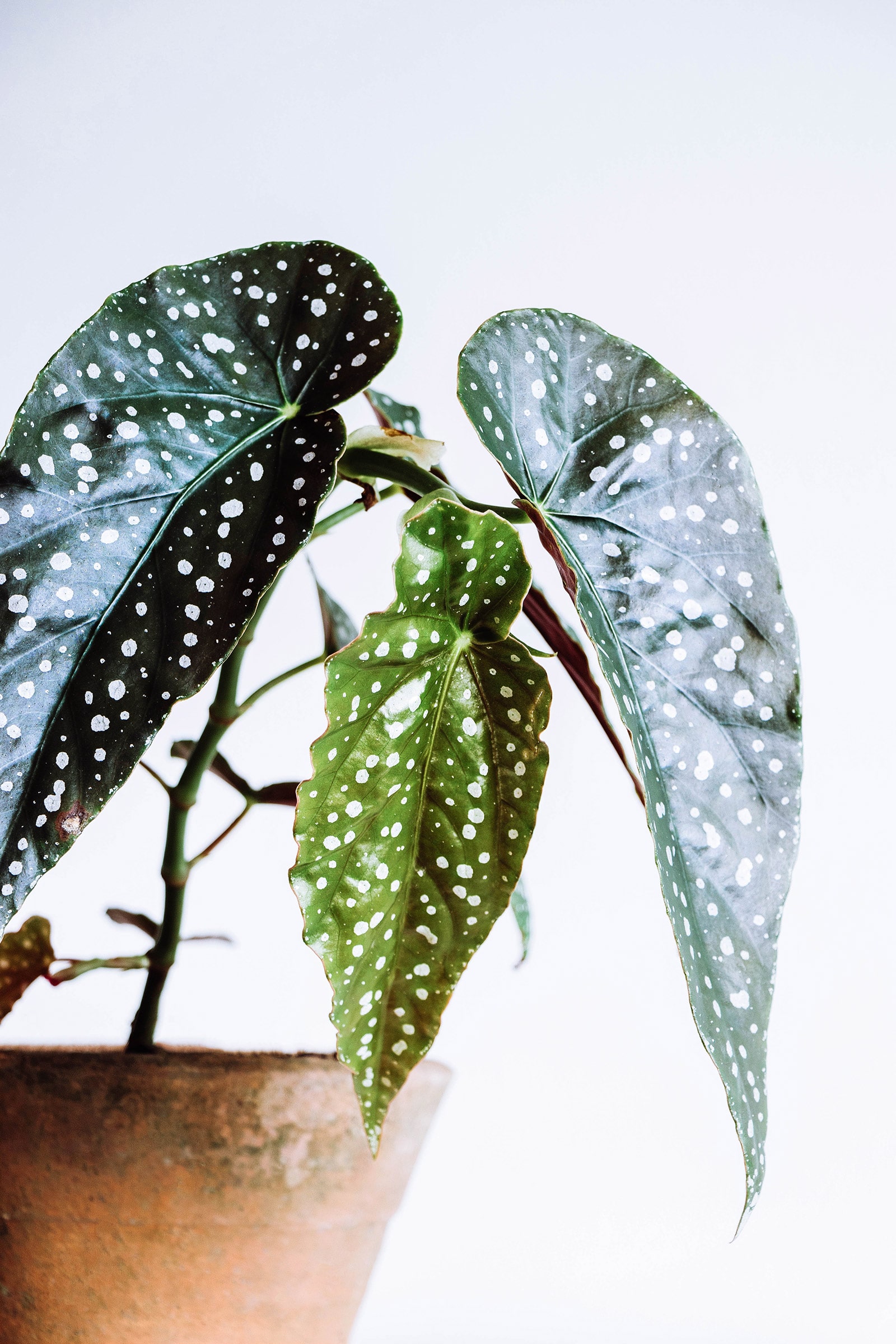
Although polka dot Begonias like some moisture, their soil should never be soggy. If the soil gets too wet, the roots will rot and the plant will die. These guys don’t care much about the soil mix and will do fine in regular houseplant potting soil, but you should add some gritty material to help it drain. I think you should loosen up your potting soil by adding 10 to 20 percent perlite, orchid bark, or pumice.
As for planting, anything goes, as long as the planter has a drainage hole in the bottom. This species of begonia doesn’t tend to grow very big roots, so you don’t need a big pot.
Recommended products for Begonia maculata plant care:
Cane Begonias aren’t heavy feeders, but these guys will still definitely appreciate a regular dash of fertilizer. Water your plants once or twice a month during the growing season and use a liquid houseplant fertilizer that has been diluted in water to half its strength.
Stop feeding your polka dot Begonia during winter. It won’t be able to use the fertilizer you give it, and giving it too much can make the brown leaf tips that Begonia fans hate so much.
Recommended fertilizers for Begonia maculata:
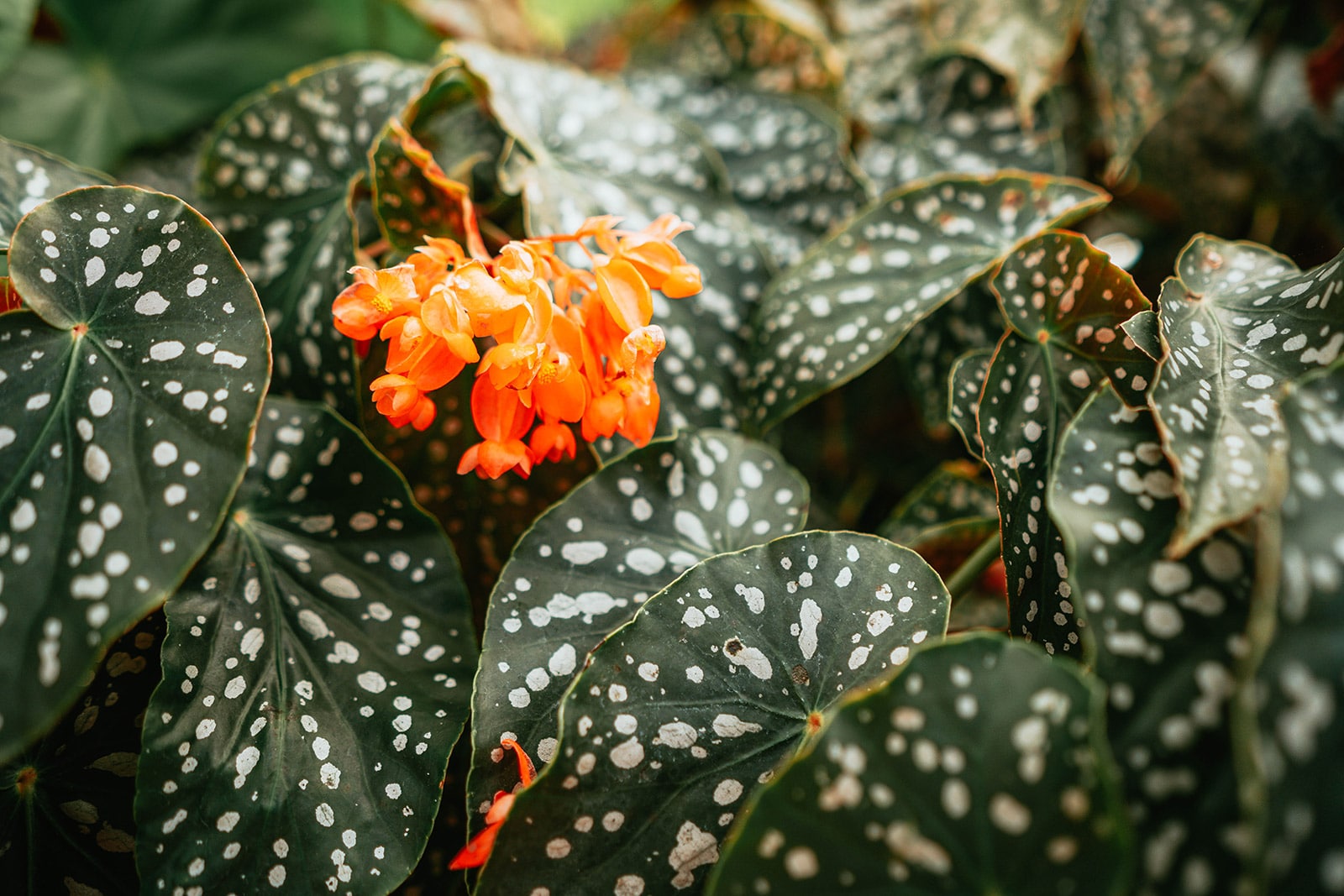
Begonia maculata is a species that does benefit visually from the occasional pruning in many cases. Even when the plant has a lot of light, it may send out stems that are too long and thin, which takes away from its bushy look.
No matter! Wait until the next growing season rolls around (spring or summer). Then, put the stem where you want it and cut it with clean pruning shears. You can either root it in water before planting it or just put it back in the planter. It should keep growing as usual and help keep your polka dot Begonia looking full.
That is the question: should you divide or repot your polka dot Begonia if it has grown too big for its pot? Most of these plants have multiple stems that were planted together at the nursery. You can choose to separate some of these stems and pot them up separately.
You can just take the plant out of its pot, separate a few stems, and put the rest of it back in the pot with some new soil. The stems you cut off will already have roots, so you can put them in a pot and they’ll keep growing normally.
You can move your plant to a new pot in one piece in the spring or summer. Choose a planter that’s an inch or so larger in diameter than the previous one.
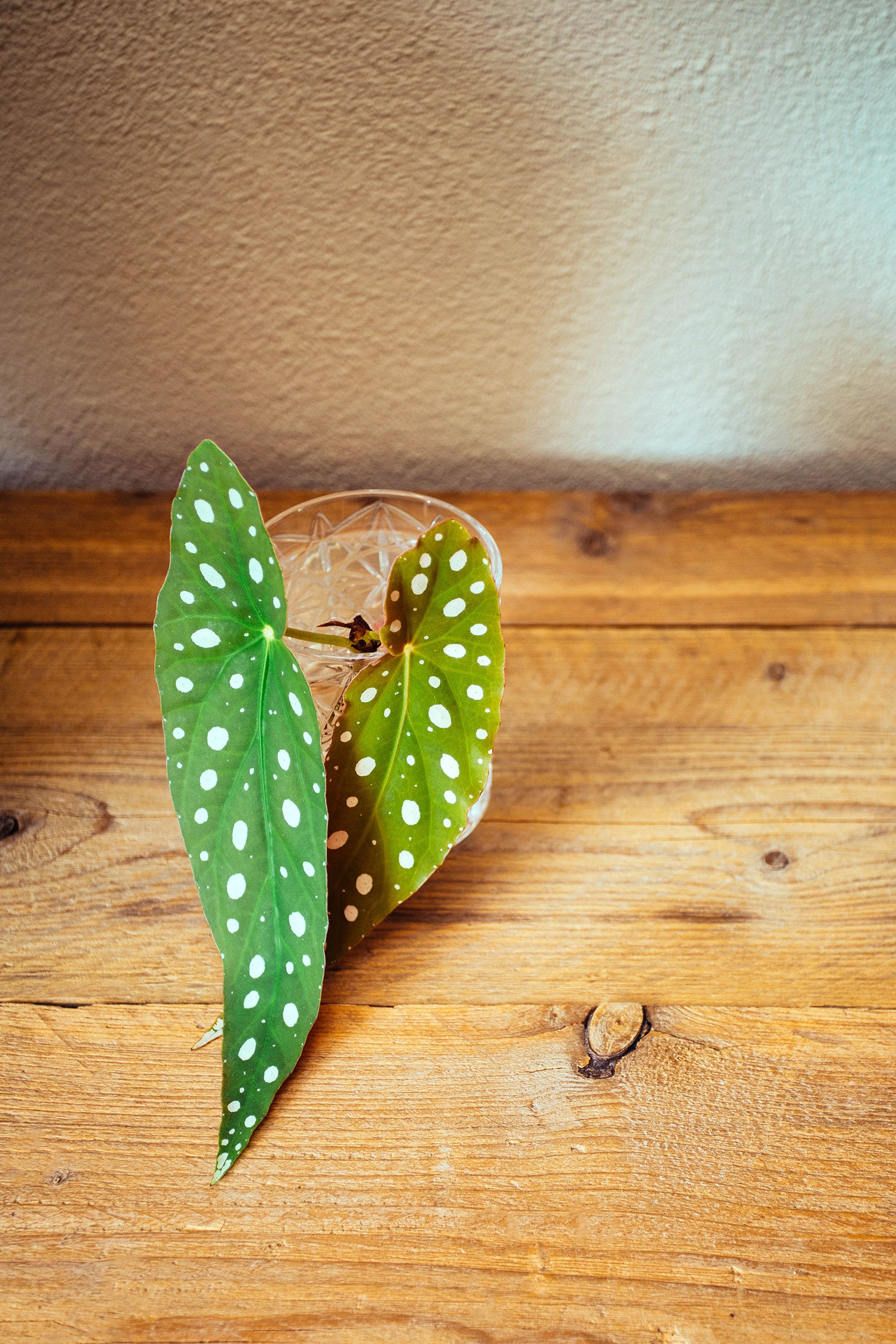
Propagating Begonias, including the polka dot Begonia, really couldn’t be easier. The division method discussed above is one of the easiest ways to do it. You could also use the method I talked about in the section on pruning, which involves putting the cut pieces (which are really stem cuttings) in water or soil to grow roots.
Did you know? Technically a Begonia stem cutting doesn’t even have to include leaves. You can cut the canes into pieces at least an inch or two long and root them in wet sphagnum moss or your chosen medium. The section can grow new roots or leaves as long as it has an eye, which is a bump that roots or leaves can grow from.
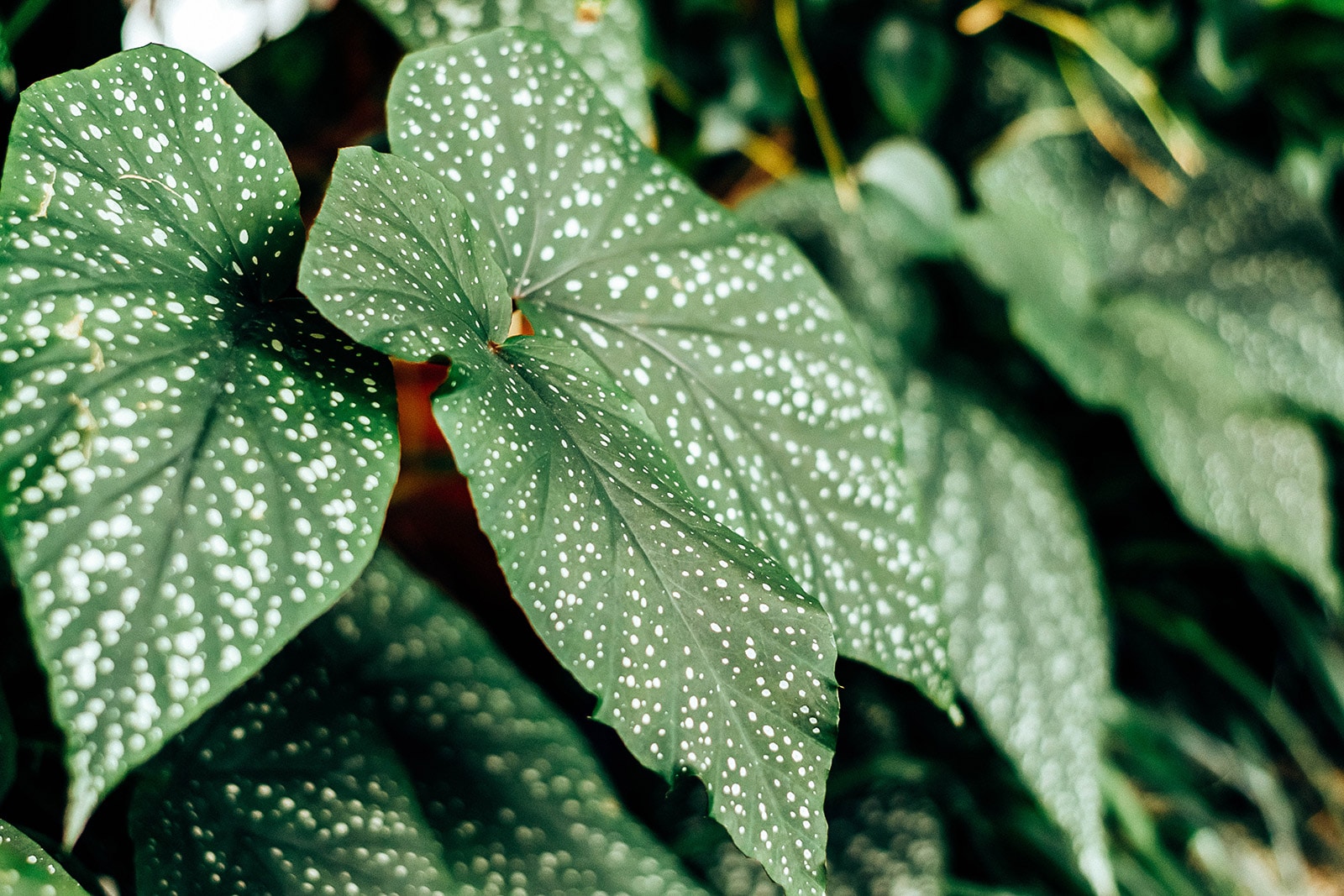
Common questions about Begonia maculata care
Don’t panic! It happens to the best of us. If your Begonia isn’t shocked from being moved (which can happen if you bring a new one home) or from being outside in the cold, you should look at how often you water it.
It may dry out a little more slowly than in the summer, so your plant will need less watering. Is it winter? In summer, you may have to water twice as often, which means you may have waited too long.
Houseplant Trends 2021: The Begonia Maculata Whightii (Angel Wing/Polka Dot Begonia) Care + Tips!
- The Ultimate Guide to Growing Strawberries in Raised Beds - August 8, 2025
- No-Dig Garden Beds: The Easiest Way to Grow a Beautiful Garden - August 6, 2025
- How to Protect and Preserve Wood for Raised Garden Beds - August 6, 2025

